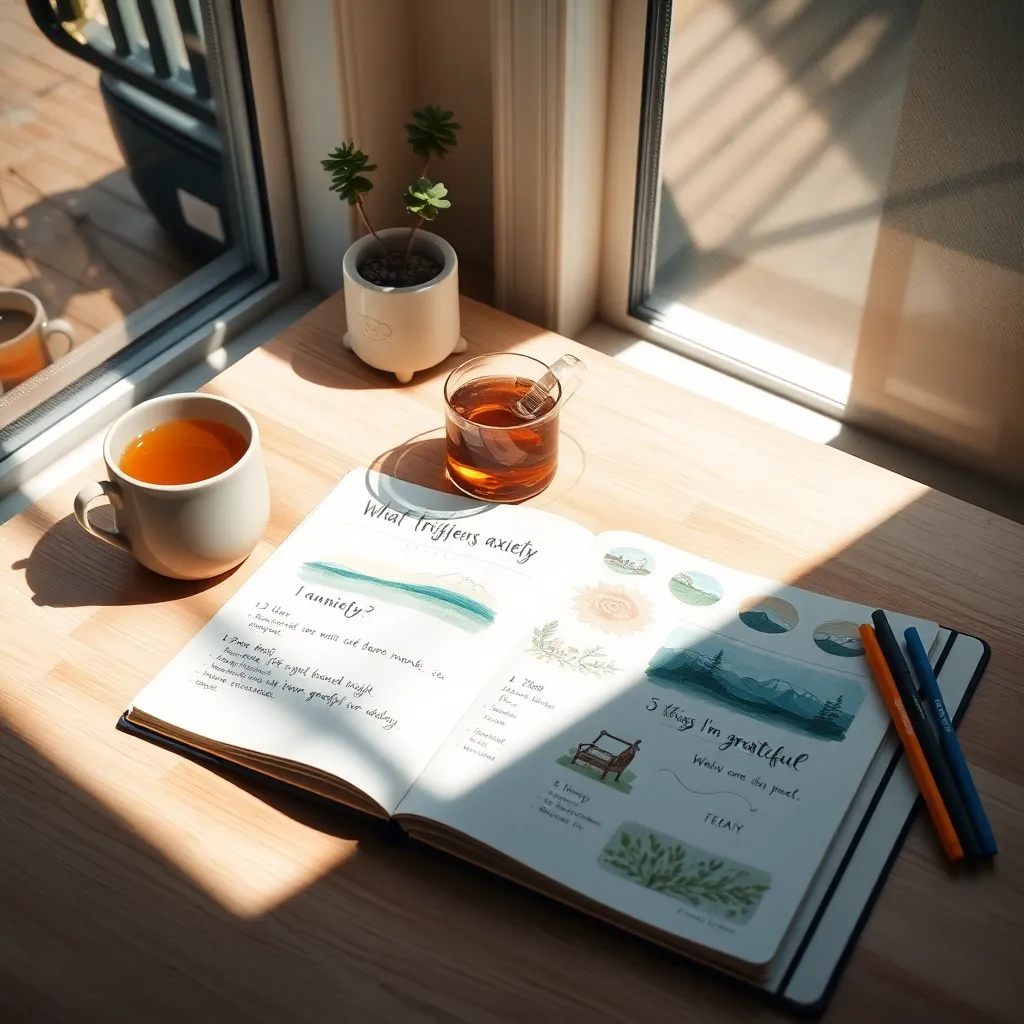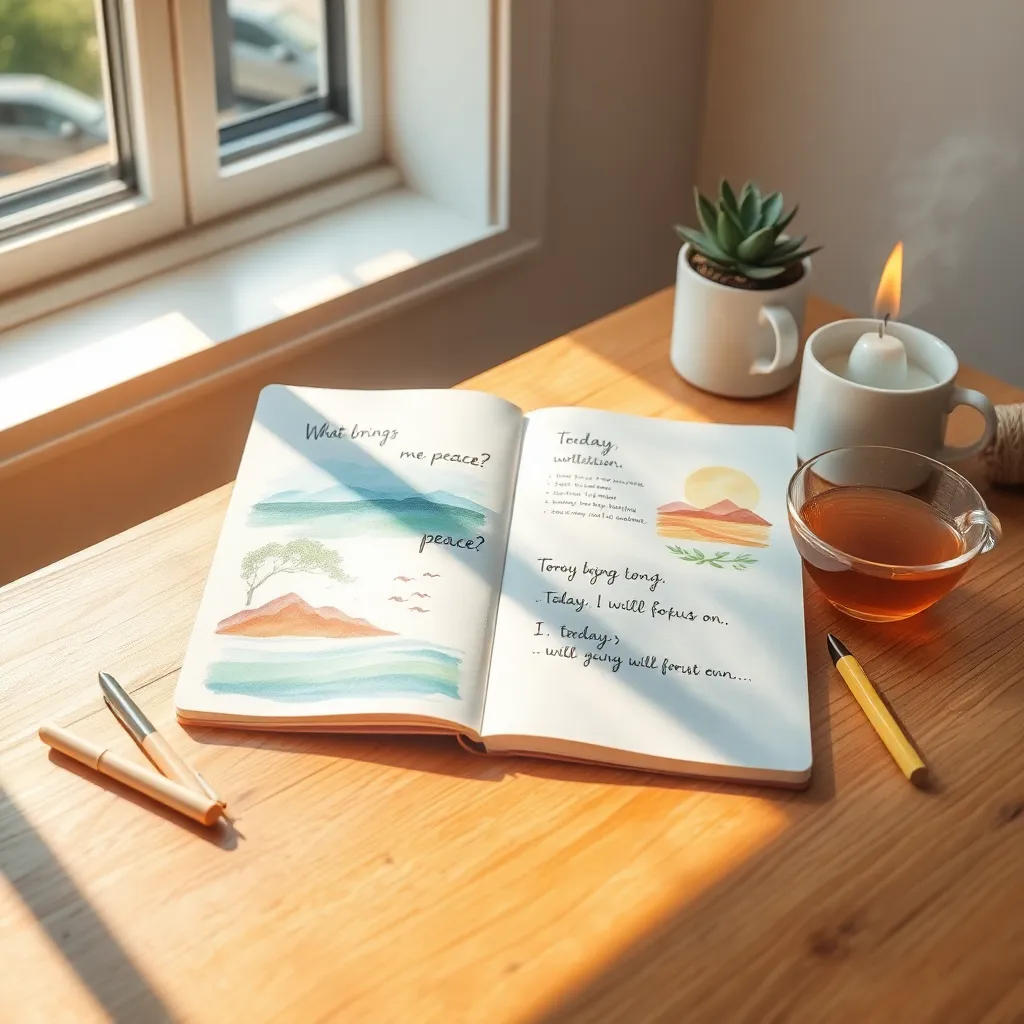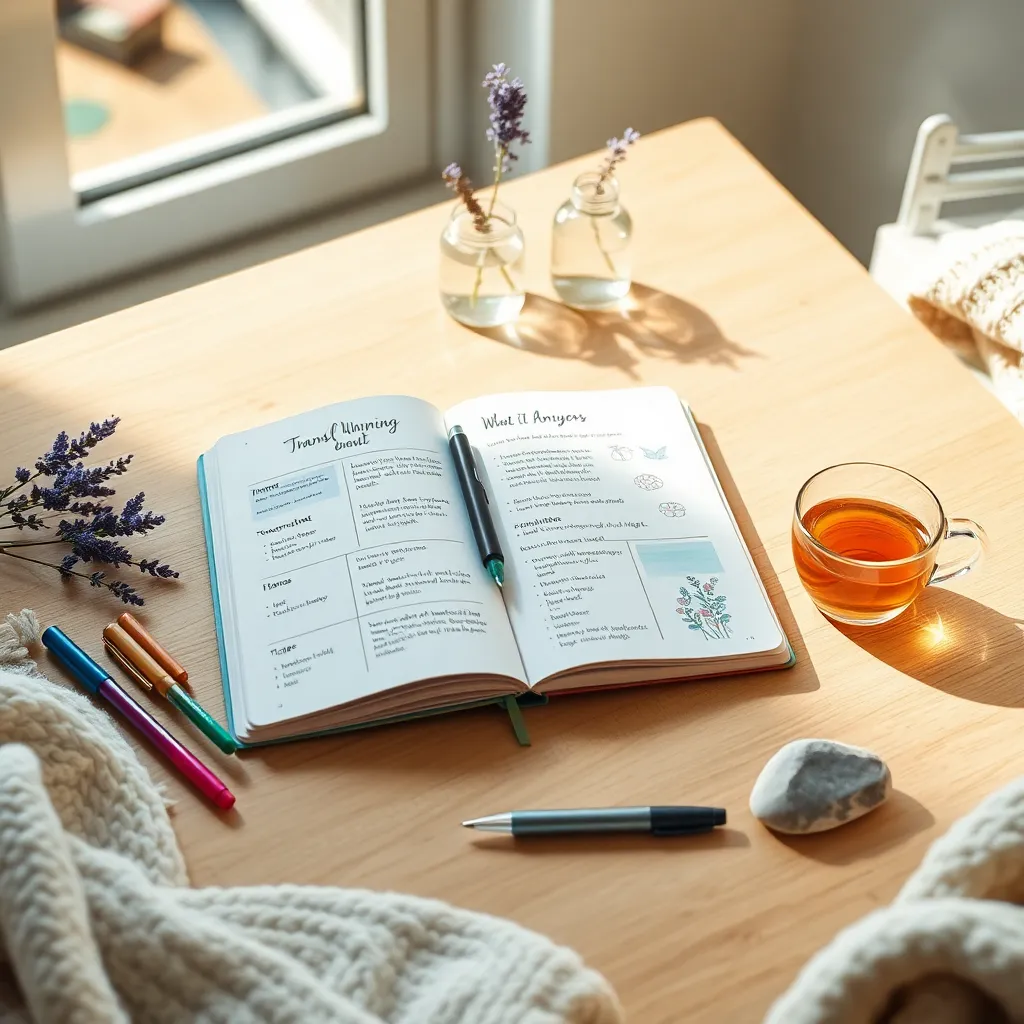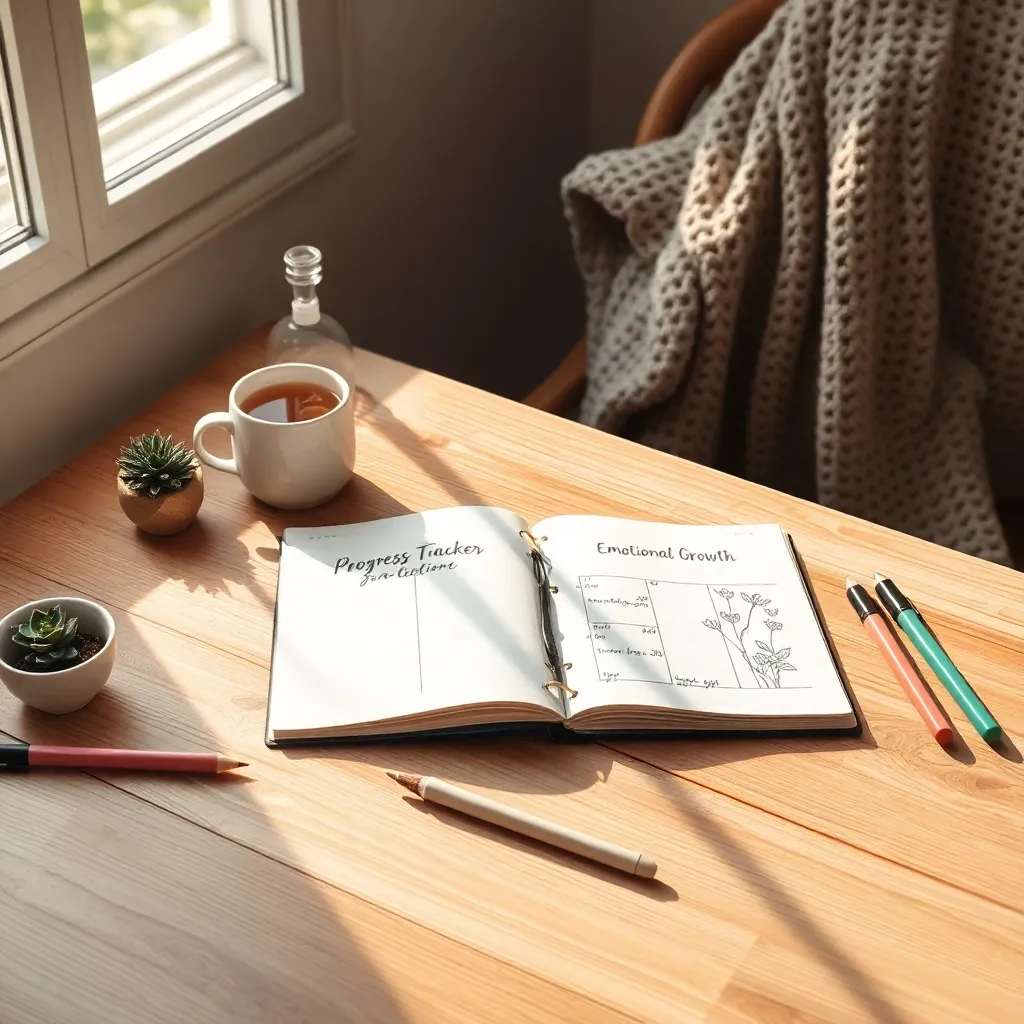Journaling can be a soothing balm for anxious minds, offering a safe space to untangle thoughts. By putting pen to paper, you create a pathway to understanding and peace.
Dive into this practice to discover calming techniques that transform anxiety into clarity. Embrace the journey of self-reflection and find your moments of serenity.
Understanding Anxiety Through Journaling

Begin by acknowledging your anxiety through journaling. Identify triggers and describe feelings when anxious. Use prompts like:
- “What am I feeling right now?”
- “What event or thought triggered this feeling?”
Next, transform these insights into actionable steps. Reflect on patterns and consider changes or coping strategies. Prompts to explore include:
- “How can I respond differently next time?”
- “What small action can soothe me now?”
Setting Intentions for Calm Reflection

Begin by setting an intention for your journaling session. Focus on creating a space of calm reflection. Choose a quiet spot, and take a few deep breaths to center yourself before writing.
Use prompts to guide your thoughts. Consider:
- “What is one thing I can release today?”
- “What brings me peace?”
Let your responses flow without judgment, fostering a sense of inner calm.
Techniques for Streamlining Thoughts

Begin by practicing a simple mind dump to clear mental clutter. Spend 5 minutes writing without stopping, allowing thoughts to flow freely onto the page. This technique helps identify underlying anxieties and patterns.
To further focus your thoughts, try the 5-4-3-2-1 grounding prompt: list 5 things you see, 4 you feel, 3 you hear, 2 you smell, and 1 you taste. This quick exercise anchors you in the present, easing anxious feelings.
Transforming Worry into Written Words

Transform worry into words by setting a timer for 5 minutes. During this time, write freely about your concerns without judgment. Release your thoughts to gain clarity and peace.
Use specific prompts to guide your reflection. Ask yourself:
- What can I control right now?
- What is one positive outcome of this situation?
These questions help shift focus from anxiety to solutions.
Tracking Progress and Emotional Growth

Tracking your progress is vital for emotional growth. Reflect weekly on your emotional shifts by noting any improvements or challenges. This helps identify patterns and celebrate small victories.
Use prompts like:
- “What emotions did I experience today?”
- “How have I grown emotionally this week?”
These encourage self-awareness and foster a deeper understanding of your journey.
Conclusion: Creating Beautiful Outdoor Spaces
In navigating the complexities of anxiety within relationships, journaling emerges as a powerful tool to foster understanding and connection. This article highlighted five pivotal concepts: recognizing the individual triggers that spur anxiety, practicing active listening to validate your partner’s feelings, setting healthy boundaries to protect emotional well-being, cultivating empathy to strengthen bonds, and reflecting on personal experiences to promote self-awareness.
Your actionable next step is to begin a daily journaling practice. Start by dedicating just ten minutes each evening to jot down your thoughts, feelings, and reflections on interactions with your partner. This simple practice can unveil profound insights, fostering a deeper connection and more harmonious relationship.
As you embark on this journey toward relationship growth, be sure to save or bookmark this article for easy reference. By keeping these insights at your fingertips, you will have a valuable resource to guide you through the natural ebbs and flows of any partnership.
Remember, every step you take today plants the seeds for a nurturing and resilient relationship tomorrow. Embrace this opportunity to transform anxiety into a catalyst for positive change and lasting success in your relationships.


